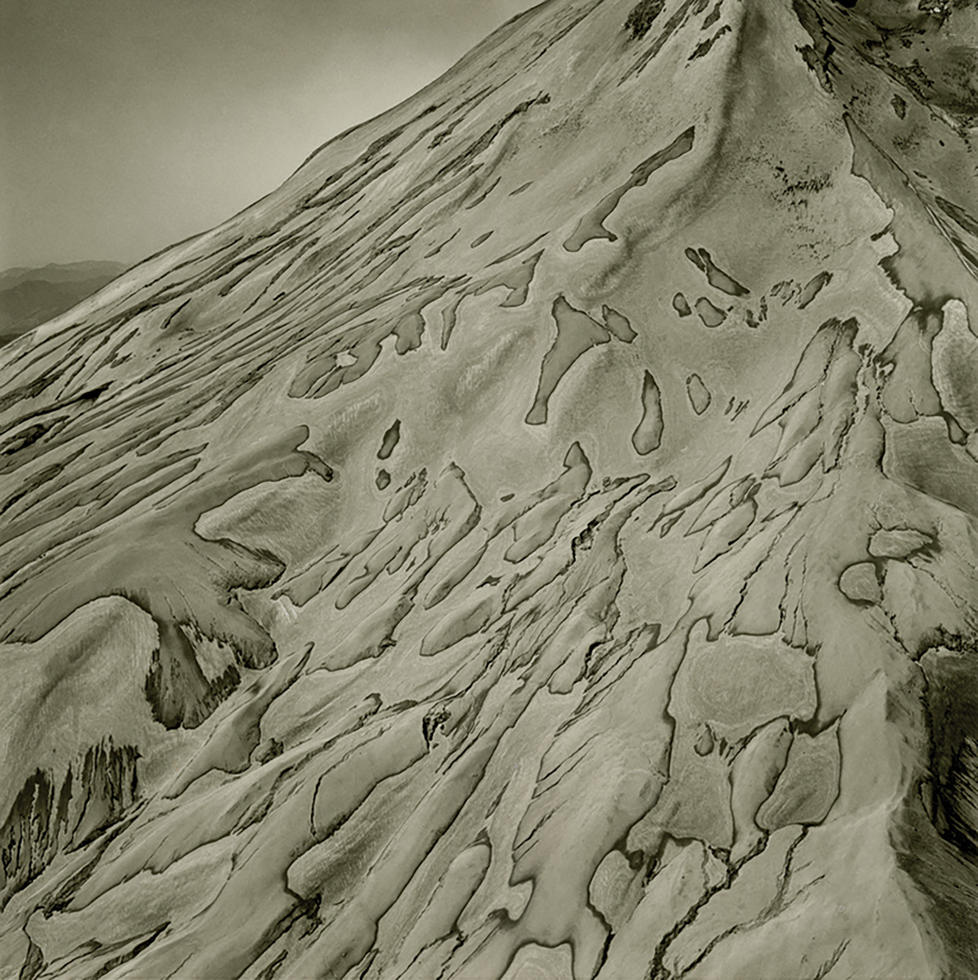Emmet Gowin’s Photo Archive Finds a Lasting Home at Princeton
In making a photographic print, Emmet Gowin said, “I go through a gradient of discovery.” As a professor in Princeton’s Program in Visual Arts from 1973 to 2009, he incorporated that process into his teaching.
Gowin remembers a photograph of Mount St. Helens, the volcano in Washington state, that he took in 1982. He did a poor job of exposing the image, so the top half was too dark.
“Normally, you would throw that away and kick yourself for wasting a sheet of paper,” he said. “But I kept the print and took it to class, where I used a very dilute ferricyanide bleach to remove some of the silver, the overexposure. Gradually the top half started to match the bottom half. I said, ‘Forgive me, now I can’t talk, this has never happened to me before.’ Finally, it did match perfectly, and with a beauty I could never have anticipated or repeat.”
Earlier this year, Gowin committed his archive to the Princeton University Art Museum. In addition to more than 650 of his photographs, the museum will acquire about 500 unsigned test prints, 7,000 rolls of film, 7,000 contact sheets, three handmade photographic albums and three book maquettes, and more than 50 photographs by other artists, including Sally Mann and Walker Evans.
The archive covers his entire career, from his black and white photographs of his wife and their two children to aerial images of Mount St. Helens and several other projects.
Gowin placed his body of work at Princeton, he said, out of “a great sense of gratitude” to the University and its students, “young people whom I imagined would be so much more advanced and prepared for life than I was and yet became very quickly my intellectual allies.”
The material not only established Gowin as a significant photographer whose work is in the collections of the Museum of Modern Art and the Metropolitan Museum in New York; it also suffused his instruction.
Gowin built his collection of other artists’ work in large part by trading his work for theirs, often when they were visiting Princeton. He made it a practice to hang some of those works, vernacular images and prints by photographers he revered, in the hallway of 185 Nassau St.
“Every two or three weeks, I would change that show,” he said. “When you came to class, you might be surprised by what was on that wall. Class has just started, and already you’re thinking about a problem.”
Gowin has exceptional technical ability in developing photographs, said Carla Williams ’86, whom Gowin advised on her senior thesis, and he used his own work in explaining that craft to students. “He spent a lot of time in the darkroom,” she said. “He would bring in the negatives and walk us through all of the choices that have to be made in the making of that print.”
And, she added, Gowin “was an incredibly generous, kind instructor. He was never critical. He always found something constructive to say. He gave you the latitude to make mistakes. It fostered your love for this thing. It was an amazing way of experiencing a creative practice in the construct of an educational institution.”
Gowin is now reviewing his own work to prepare it for the archives. The process, Gowin said, allows him “to revisit all the film I’ve ever made and see if there were images that I couldn’t understand or was too stupid to see. I’m finding things that are amazing. Going back to my earlier work has been such a great joy.”












No responses yet